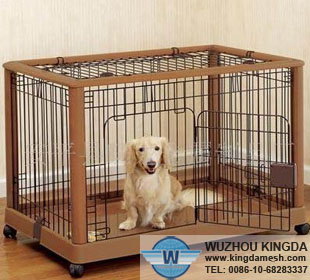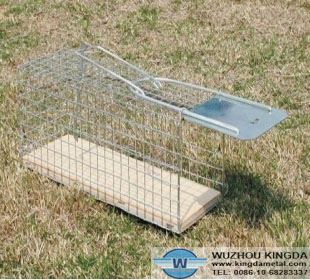How to Design Animal Cages
How to Design Animal Cages
If you have an unconventional pet that does not do well in an ordinary house or yard setting, or a dog or cat that needs a private space of her own, you will need a cage. Whatever your needs may be, learning how to properly design a cage is essential to the safety and well-being of your pet.
Instructions
1 Educate yourself about the proper care, feeding and housing for whichever pet you are designing a cage. Pet information is everywhere---in libraries and online---and understanding your pet's basic needs will insure a well-designed habitat.
2 Measure your pet. For a temporary cage, check the pet's length and width plus a few extra inches to allow for stretching out, turning around and standing. If this is to be permanent living quarters for an unconventional pet such as a snake or iguana, you should make it much larger and include areas for full-length sleeping, eating, basking and exercise.
3 Draw a square, rectangle or other desired shape representing the maximum space you want to work with---a 4 foot wide x 8 foot long x 8 foot high space would be ideal for iguana living quarters, for instance. For carrying your cat to the vet, you may only need a 12 inch wide x 18 inch long x 15 inch tall space. When deciding size, consider both the time your pet will occupy the space, and its intended use.
4 Sketch in a rough plan to include all the use areas you want to incorporate for your pet. Make these true to scale and do not forget vertical space and access doors.
5 Experiment until you have a layout that incorporates everything you need inside that space. Cutting out paper circles, squares or rectangles of proper scale to represent the individual elements---such as food and water bowls, basking shelf or exercise wheel---allows you to move them around on your sketch until everything fits satisfactorily.
6 Plan your cage for easy access. As stated by Clay Davenport, A.R.B., "Do not make a 4-foot tall cage that only opens from the top. If getting in the cage to clean and care for the animal is a pain, then the level of care provided will eventually decline."
7 Study your scale drawing and list the things you will need. If you are handy, you will want to build it yourself, so take the time to double check measurements and materials before heading to the DIY store.
8 Check for cabinets, boxes, bookcases or simple manufactured cages of a similar outside dimension that may be adapted to your design. If you prefer to invest your time building only the interior element, an old bookshelf may find new life as a multitier rat cage.
9 Plan the finish and furnishings for the cage as appropriate for your pet, keeping in mind some animals may be sensitive to a variety of chemicals. Read labels to avoid paints, stains or furnishing items that may contain ingredients toxic to your pet. If in doubt, consult your veterinarian.




